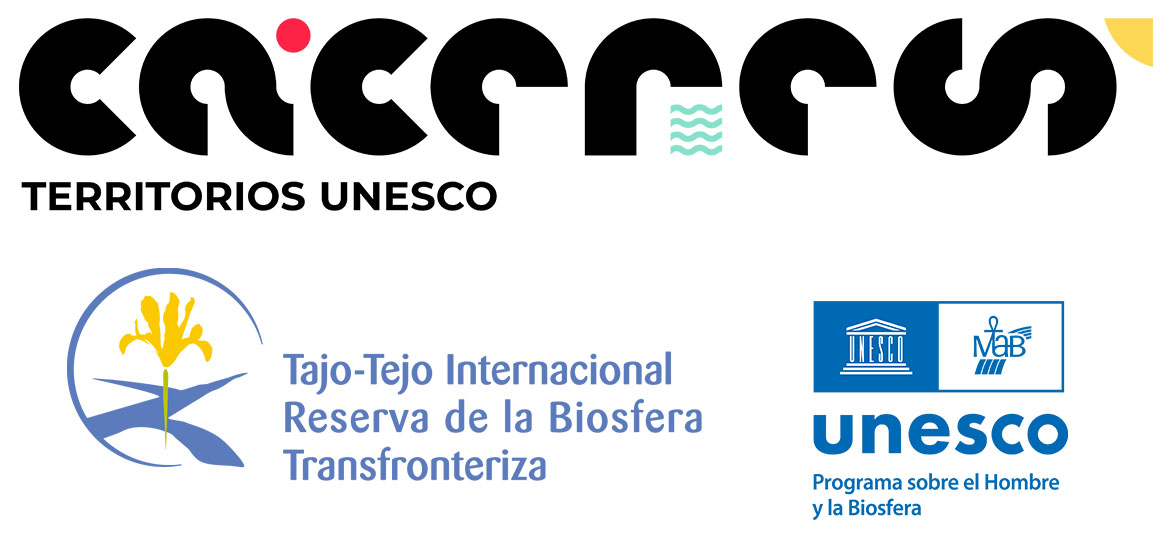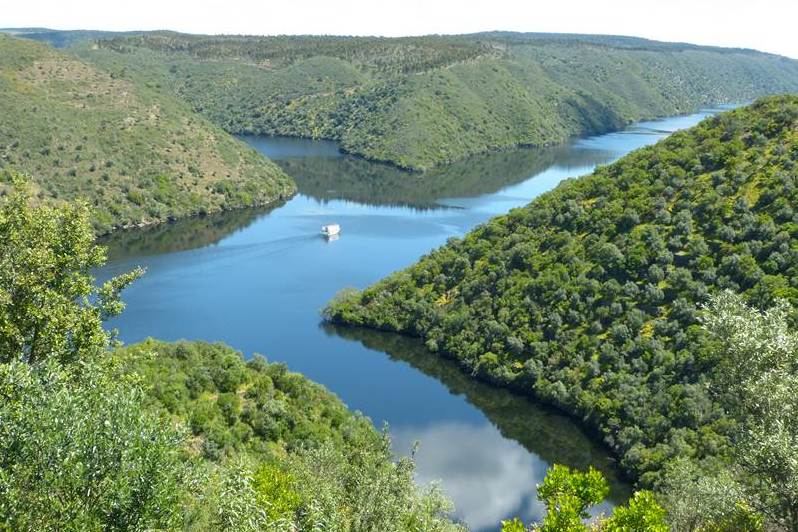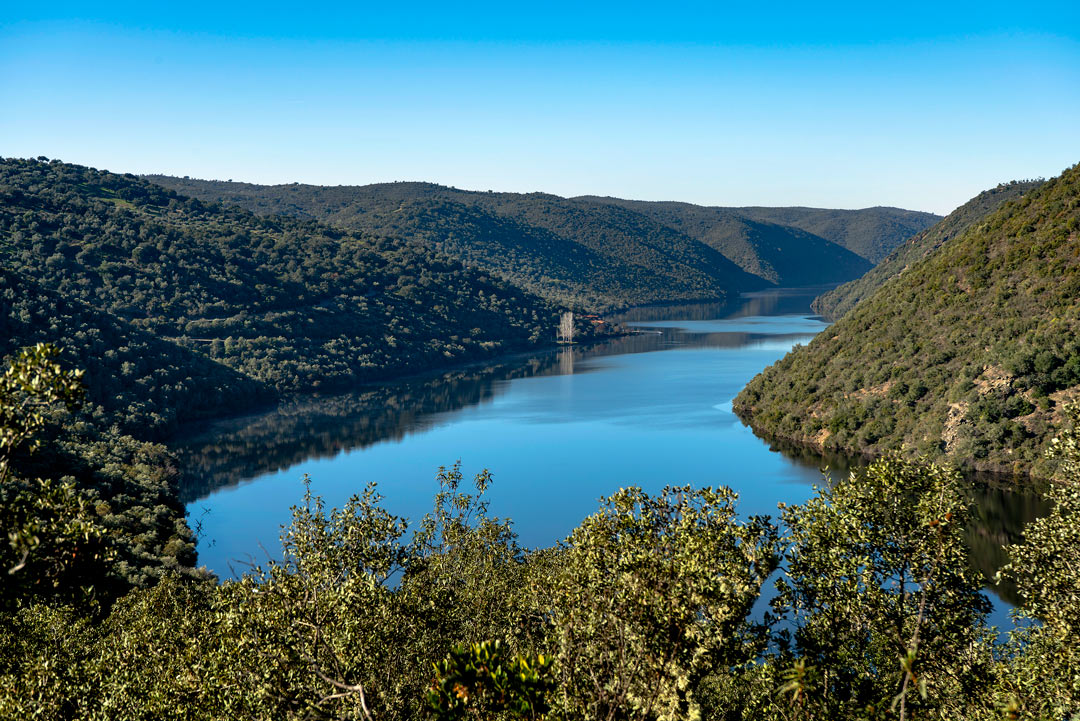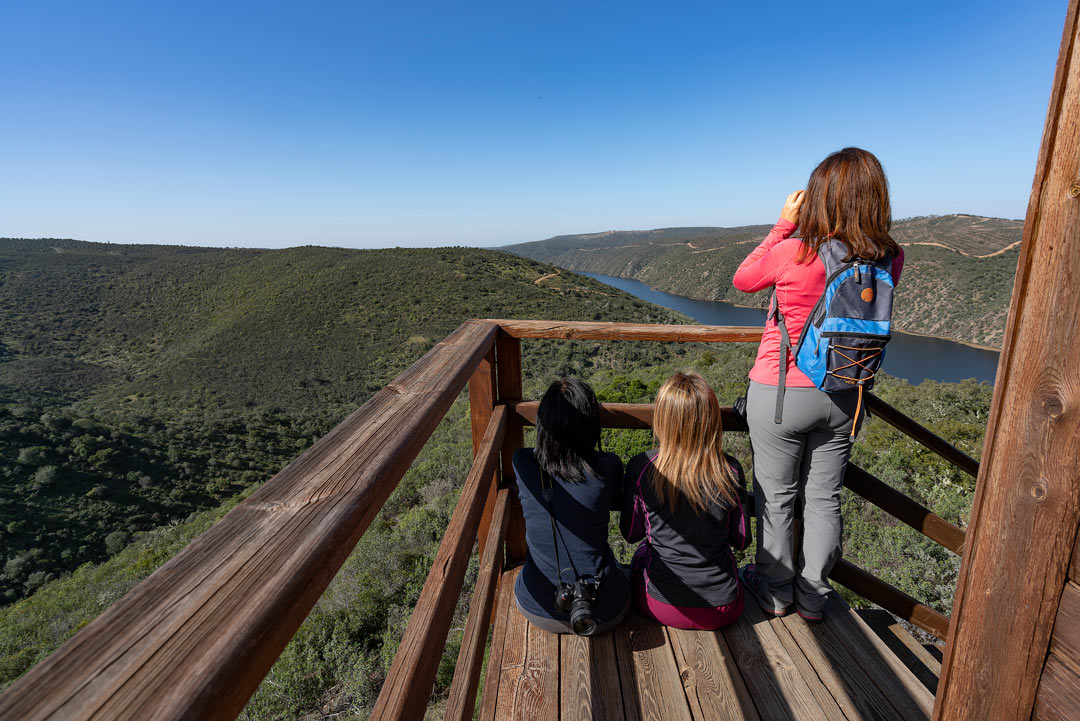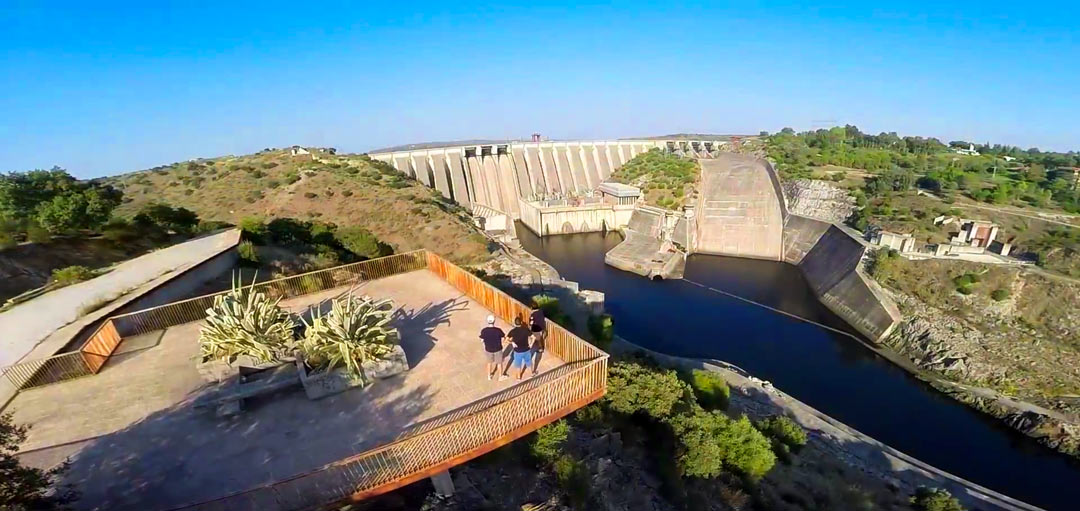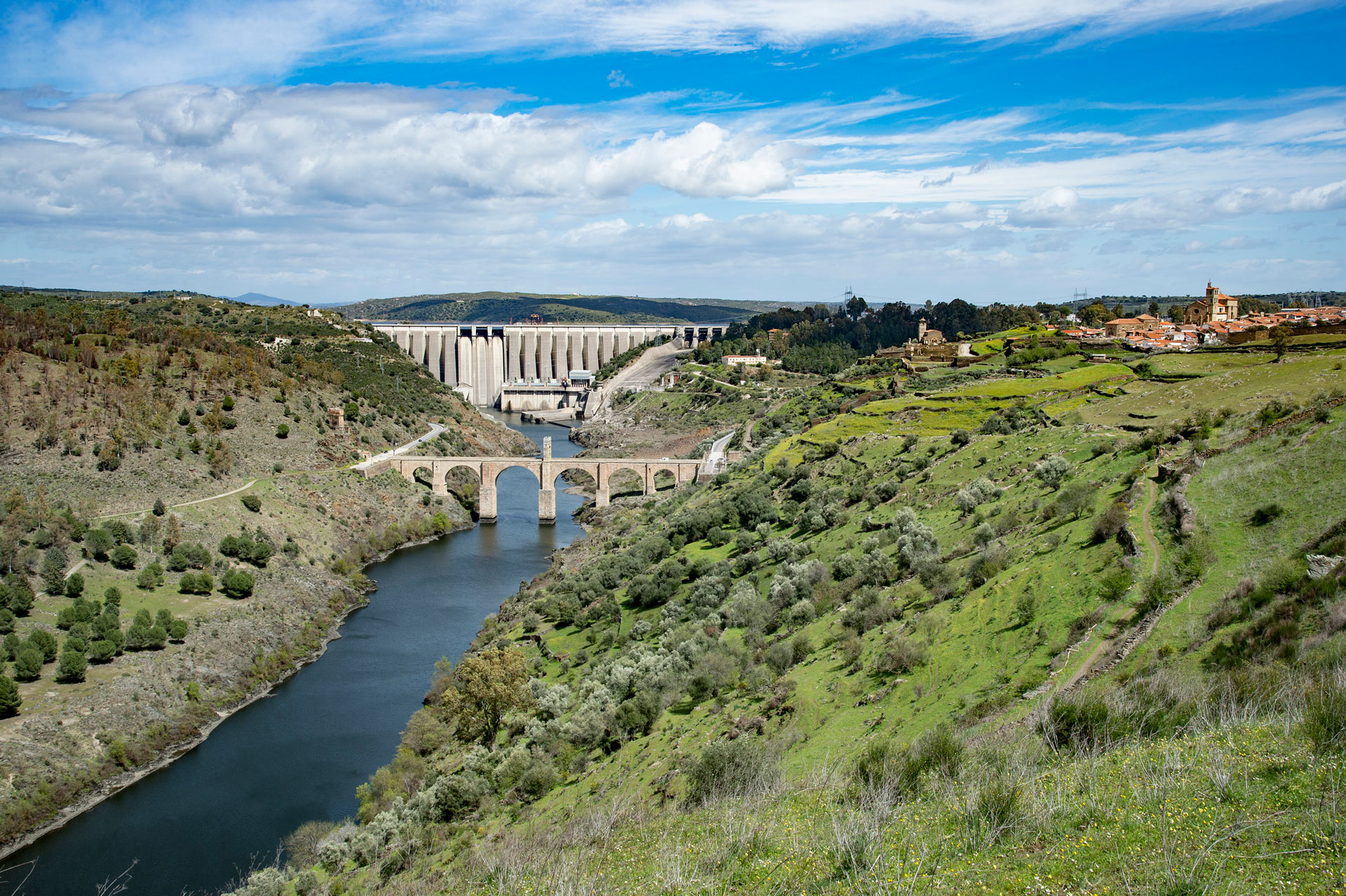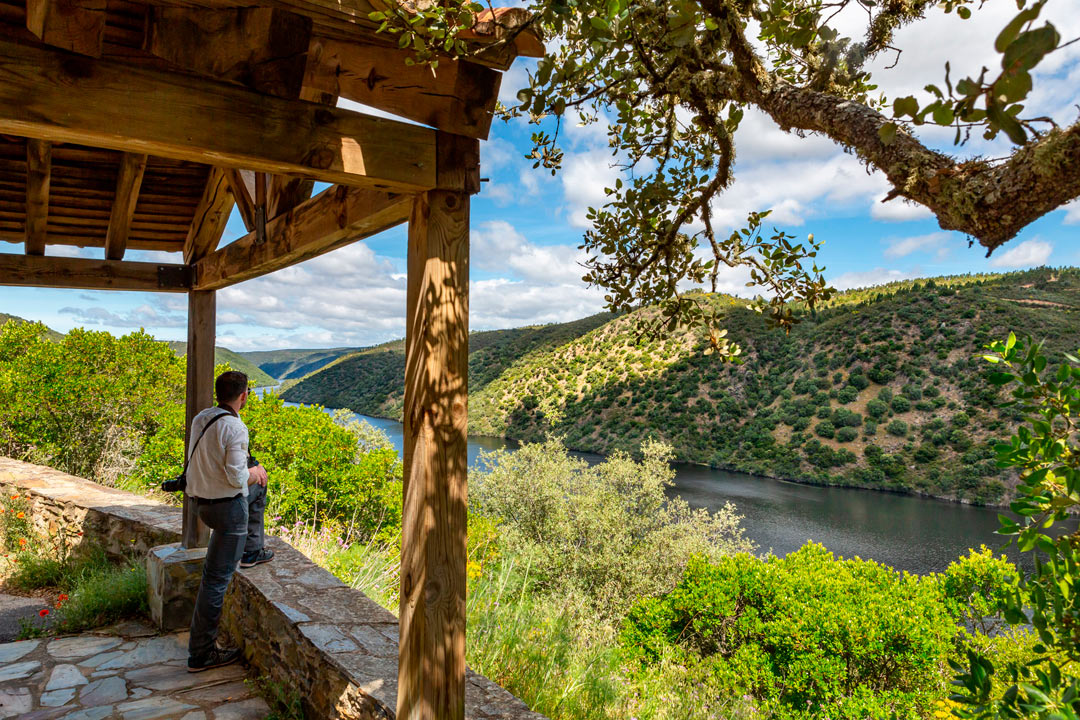The best viewpoints of Tajo Internacional
The River Tajo serves as a natural frontier between Spain and Portugal and has identical characteristics on both sides of La Raya. Here we find the typical vegetation of Mediterranean woodland dominated by cork oaks, holm oaks, and scrubland. In spring the flowering of the rockrose is spectacular. Moreover, this territory has the most capricious shapes based on rough rocks and banks through which flow streams and brooks to give rise to a fantasy landscape which contrasts with the surrounding plains.
We suggest to you below the best viewpoints for making a stop on the way and enjoying this cross-border paradise.
‘La Carrasquera’ Viewpoint
Cedillo, the most westerly village of the province of Cáceres, has in its vicinity this spectacular viewpoint over the River Tajo. At the end of the path of the same name there is a viewpoint which positions you just at the point where the Erjas and Sever Rivers flow into the Tajo. You could stay there for hours contemplating the landscape.
If you feel like walking you can return to Cedillo on foot (about 2 kilometres) or start the Natural Tajo Trail (GR113), an officially approved route to explore from the source of the river to the border with Portugal.
Negrales Viewpoint
The spectacular landscape of the meanders of the Negrales Brook is a must for nature lovers. Here once again the Spanish-Portuguese border fuses with the banks, holm oaks, rockroses, furze, white heather, and laurustinus. Moreover, you can come across otters, short-toed eagles, Bonelli’s eagles, or black vultures without forgetting the unusual rock formations along the river. It is striking that depending on the time of the year several species of butterfly abound such as the brimstone, the Cleopatra, and the two-tailed pasha; the birthwort plant is also to be found.
Las Viñas Viewpoint
Situated on the banks of the Tajo, this enclave affords unbeatable views of the longest river in the Iberian Peninsula. A large wooden tower, the keys of which must be asked for at the ‘El Péndere’ Interpretation Centre in Santiago de Alcántara, acts as a hide for watching the flight of the large birds of prey of the nature reserve over a landscape of dehesas and olive trees split by the sharp drop in altitude caused by the Tajo.
During late summer and early autumn The Las Viñas viewpoint is a strategic spot for enjoying the spectacle of the rut.
The ecological corridor of Herrera and Santiago de Alcántara
Once again we find ourselves at an ideal spot for enjoying the local avifauna in an area where the final uplands of the Sierra de San Pedro contrast with the narrow valley of the Tajo. From the top we can observe birds of prey in wild nature and historical remains such as the ‘El Buraco’ cave, an example of harmony between man and the environment.
As a curiosity, on the way to this viewpoint you will find a fountain of sulphurous water which makes this enclave one of the most striking in the Nature Reserve.
Viewpoint of the Alcántara Dam (Balcón del Tajo)
Just before you reach the town of Alcántara there is a turning you can take to enjoy the exceptional views of the Viewpoint of the Dam (Balcón del Tajo). From this spot you can see the whole of the reservoir, the town of Alcántara, and of course its age-old Roman Bridge.
It should be remembered that the José María Oriol or Alcántara II Dam was completed in 1969 and was at the time the second largest reservoir in Europe with a length of 91 kilometres. This dam regulates the flow of the Tajo to generate electricity and represents the aesthetic and technical fusion between the excellent Roman engineering and that of the 20th century, with both having the objective of mastering the great River Tajo.
Balcony of the World Viewpoint
There is a lovely path along a short distance which runs between walls of slate to afford spectacular views of Alcántara, the walled enclosure, the Roman Bridge, and the banks of the River Tajo. The “Balcony of the World” Viewpoint allows us to contemplate the riverside landscape which the Tajo affords us with its Roman Bridge in the background and also part of the historic centre. The route lasts barely an hour and is easy as there are no differences in height or other difficulties.
Mari Loza Viewpoint
To reach this viewpoint you must take the trail that leaves Herrera de Alcántara from the ‘Mari Loza’ alley which runs to the banks of the Tajo at the jetty; a little further on alongside the old fishermen’s houses there is another viewpoint. This route is of great botanical interest thanks to its hackberries and hawthorns which gradually give way to holm oaks, Portuguese oaks, Mediterranean buckthorn, and terebinths. The aroma given off by this spot is of jasmine, oregano, angel’s tears, marjoram, and several species of orchids which coexist with a multitude of animals such as long-tailed tits, badgers, and otters.

